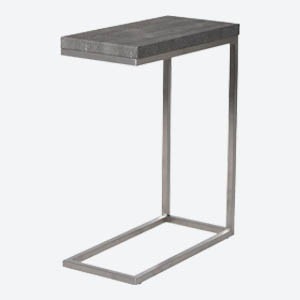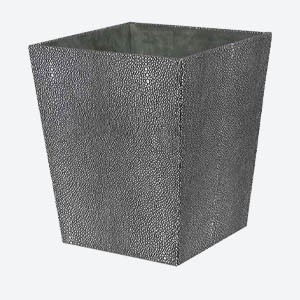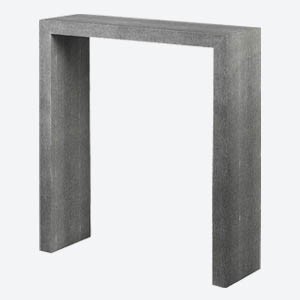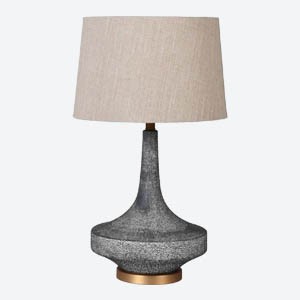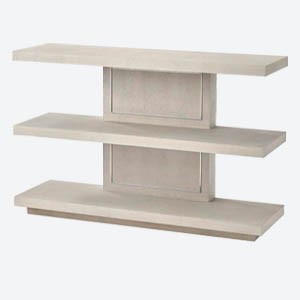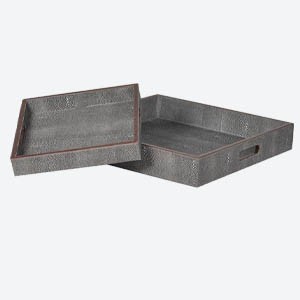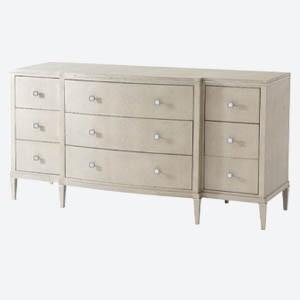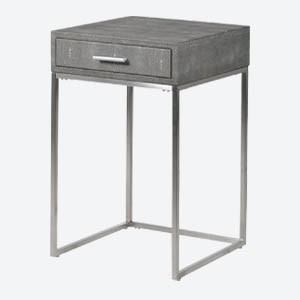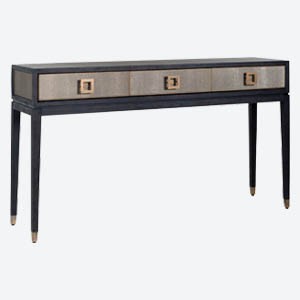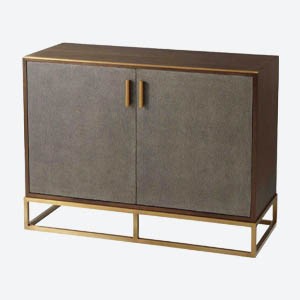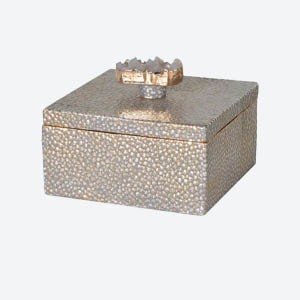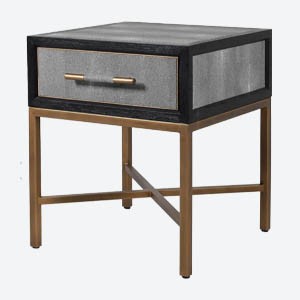An icon of the interior design world – shagreen is considered one of the most luxurious finishes for furniture and accessories in a living space. But, just what is this mystifying material? Whether it's something you've glimpsed on an interior design programme, a topic of interest or you've simply come across it while browsing through our website, we’re going to break down all things shagreen in this quick and easy guide.

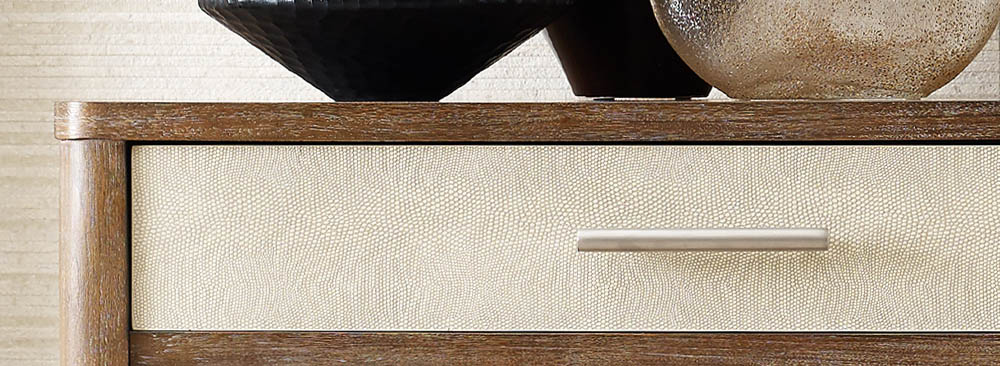
What is Shagreen?
Shagreen - also referred to as stingray skin, embossed leather or shagreen effect - is a decorative dappled finish. It is commonly used as a covering on home accessories such as trays and boxes and as decorative inlays on furniture. This highly tactile material is typically associated with luxurious and high-end interior design. There are 2 types: real and faux.
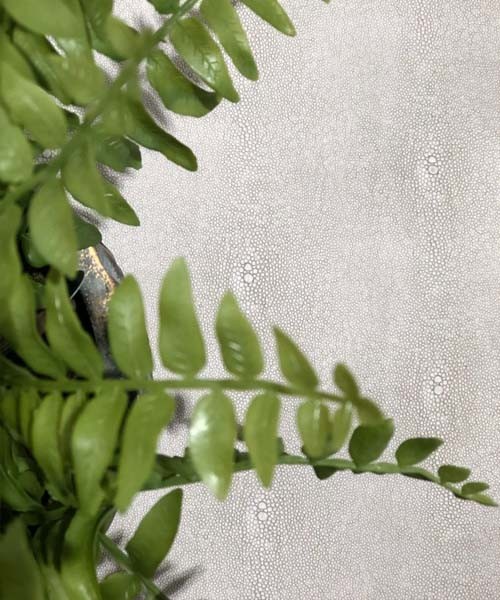
What is Real Shagreen?
And What is Shagreen Made From?
Characterised by its pebbly texture, real shagreen is made from natural hide. This typically comes from the skin of aquatic animals such as shark and dogfish or, more commonly, stingray. It has a soft, tangible feel like leather but instead of a smooth surface, it is decorated with dappled marks that are characteristic of stingray skin.
What is Faux Shagreen?
Faux shagreen is made from non-leather materials such as polyurethane (PU), vinyl or polyester resin. It is decorated with the same pebbly texture, resembling the appearance of natural stingray, crocodile or reptile skin. It is sometimes referred to as shagreen effect.
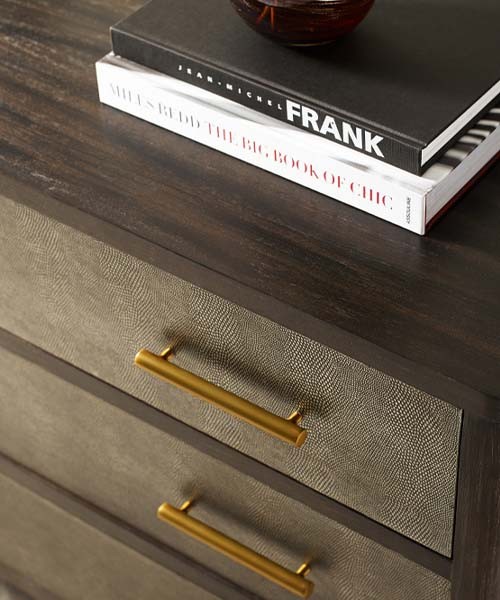
Real Vs. Faux
When it comes to the question of appearance, there’s a very fine line between real and faux.
Similar in Look & Feel
By its very nature, faux shagreen is a leather-free reproduction of it's natural equivalent. Despite this, the faux alternative is very similar to the real thing. So much so that it is often difficult to compare the difference between real and fake! The materials used to make imitation shagreen are chosen for their leather-like qualities. Once it has been applied with the signature shagreen texture, it is very difficult to tell the difference.
Faux Shagreen is Vegan & Leather-Free
Faux shagreen is vegan as - unlike real shagreen - it isn't made from animal hides. For this reason, it is used more so in the interior design of today as it is an environmentally-friendly, ethical alternative.
Real Shagreen is Completely Unique
Real shagreen shouldn’t be painted as the ‘baddie’ however. Many a designer will tell you that this hide is often sourced as a by-product of the fishing industry. It is also completely unique, decorated with authentic marks and natural patterning that simply can't be replicated by artificial alternatives.
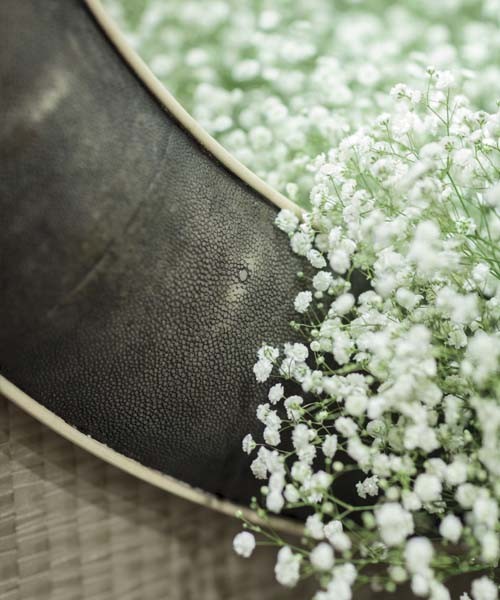
Is Shagreen Expensive?
Choose Faux For Affordability
Like genuine leather, real shagreen is more expensive than some other materials as it is an animal hide. It is also not as readily available as more common materials such as wood, metal and fabric and so demands a higher price tag. Despite this, there is a wide range of affordably priced faux shagreen furniture and home accessories on the market. This means that you can still add this luxurious look to your home without breaking the bank.
What Colour is Shagreen?
Shagreen comes in a variety of colours. Typically, ivory and grey are more popular in the modern day. But it also comes in other colours such as black, white, blue and green. Bolder shades such as emerald and jade green were more common during the 13th century when the use of this exotic material was first recorded.
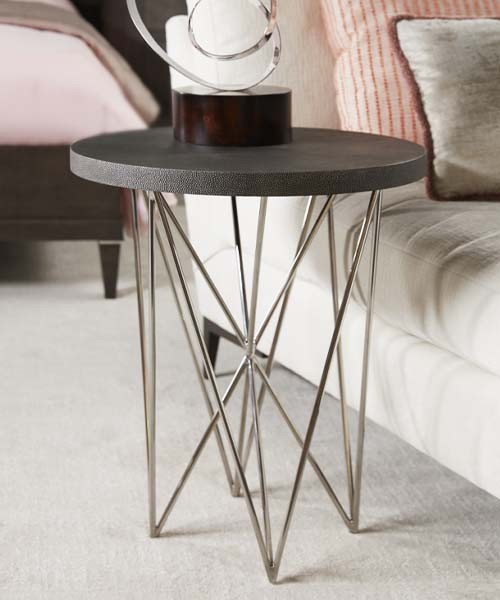
Is Shagreen Furniture Durable?
In short, yes. Faux shagreen is very durable. Often more so than its real equivalent. Real shagreen is very robust. However, its nature as a leather hide means that it can dry out over time. This may result in the inlay coming away or chipping, causing irreparable damage.
With the faux shagreen, the risk of drying out is eliminated. However care should still be taken to look after it. Scroll down for care and cleaning guidance.
How Do You Clean Faux Shagreen?
Taking care of faux shagreen surfaces is much like caring for other furniture pieces around your home – and simpler than you might think.
Dust Gently
Dust surfaces and objects gently with a dry clean cloth. Avoid using polishes or cleaning agents as these could cause damage to the surface.
Attend to Spills Immediately
Accidents happen. If you spill something on your surface – don’t panic! Just tend to it immediately. Use a soft clean cloth to remove the spillage gently, slightly moistened with warm water if necessary. Then use another clean cloth to ensure the surface is completely dry, especially on the joins and between the pebbled texture.
Cleaning Between the Grain
If debris should fall between the patterning, gently dislodge and remove using a soft toothbrush. Take care not to press too hard. If necessary, dip the brush lightly in clean water and then dry completely with a clean cloth.
Use Coasters & Placemats
Faux shagreen is sensitive to water. Use coasters and placemats as appropriate when placing drinks or plates on a tabletop.
Keep Out of Direct Sunlight
It is recommended to keep faux shagreen out of direct sunlight. Like with many other materials, persistent exposure to extensive amounts of sunlight may lead to colour fading and discolouration.
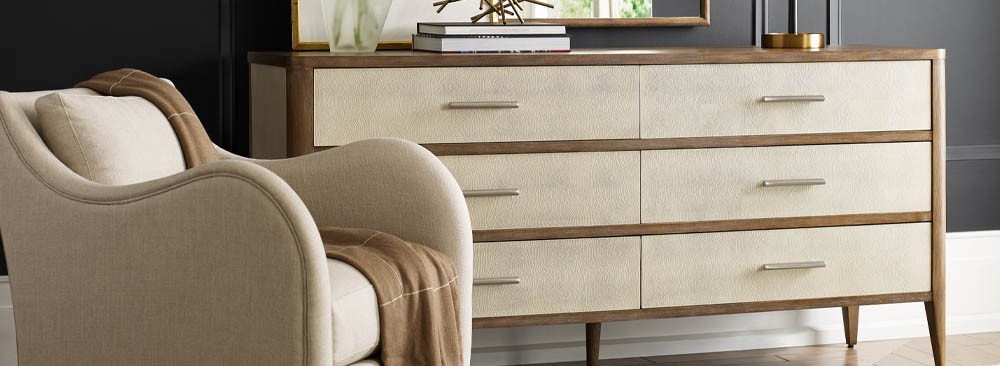
The Origins of Shagreen
As Early As the 13th Century
Let's take ourselves back to 13th century Japan. One of the first noted appearances of shagreen was during the Middle Ages where it was used on the sword handles of Japanese samurai. It's palpable texture provided good grip while also looking decorative.
Transforms Furniture in the 16th Century
It wasn't until much later during the 16th century that this exotic material was used for furniture decoration. European traders imported ornate chests from Japan which were beautifully decorated with shagreen inlays and glossy lacquers.
17th Century: A Decorative Finish for Small Items
During the 17th and 18th centuries, shagreen had fallen very much out of fashion. That was until Dutch and English craftsmen began sourcing it as decorative coverings for trinket boxes, shaving kits and knife skins. With these small scale pieces, they began experimenting with colours such as green, bringing bolder new life to this exotic texture.
Influenced by Madame de Pompadour in the 18th Century
Its popularity grew in France during the 18th century thanks in part to Madame de Pompadour. Highly influential in French court, she was the chief mistress of King Louis XV. Her adoration for the arts led her to craftsman Jean-Claude Galuchat, an artisan in leather. Galuchat introduced this exotic material to France, where it soon adorned high-class residencies across France in the form of furniture and trinket boxes. His influence was so impactful that shagreen (or sharkskin) is still known today as galuchat.
20th Century - A Revival in Art Deco Form
Following a period of unpopularity in the 19th century, shagreen made its comeback during the early 20th century in the form of Art Deco furniture. It became very popular as a decorative inlay on cabinetry and desks.
Re-Birth in the 1960s
Shagreen fell out of style again during the late 20th century. It wasn't until the 1960s that it made its return. Design icons such as Karl Springer made their mark in working with exotic textures. It is here that this material's luxurious reputation is established. Inspiration remains to be drawn from styles of the 1960s to this very day.
A Mark of Luxury
While the popularity of shagreen has ebbed and flowed over the years, today it has marked its place as one of the leading finishes of high-end interior design. And as the centuries have passed, so have the demands of shagreen. Faux alternatives made from non-leather materials are just as authentic as the real thing. This imitation material brings with it a wide range of price points that ensure that this exotic texture is accessible for every home and not limited solely to luxurious, designer spaces.

